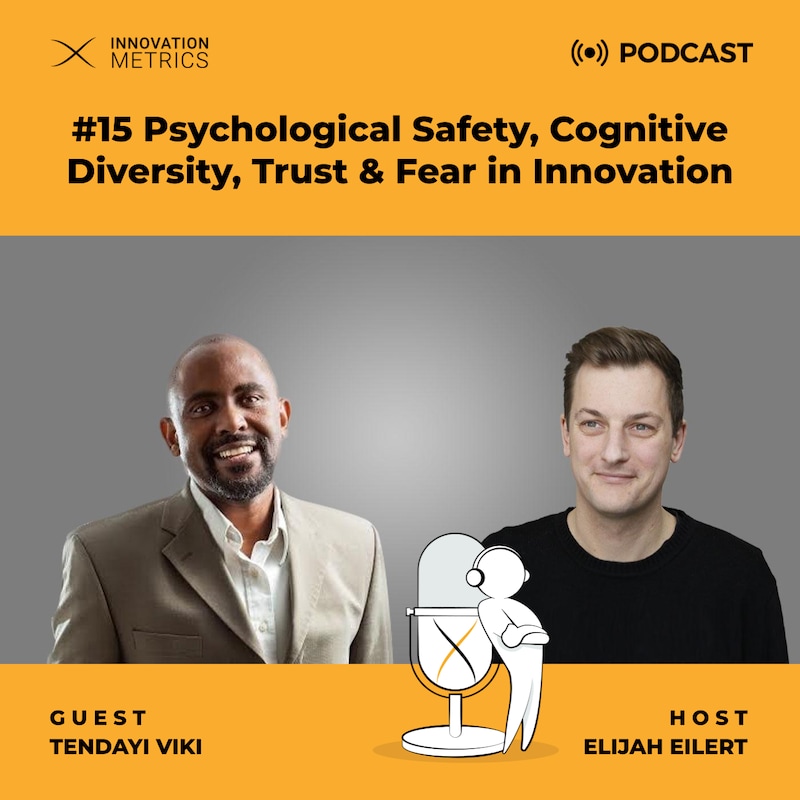Shownotes
About the Episode
Elijah Eilert is talking to Tendayi Viki about the power and pitfalls of storytelling in the context of innovation management.
A well told story has the power to move us, we are biologically programmed to buy into storytelling. The problem is that often in an innovation context a well told story bypasses logic and reason, selling a tall story devoid of facts. This lively and fun conversation will challenge your thinking and approach when it comes to storytelling in an innovation context. Whether a sceptic or a fan of well told stories, the question arises, how do we best design a system that fosters evidence-based storytelling? To what degree does storytelling need to be encouraged or even regulated?
We are trying to use evidence to make investment decisions. The thing that’s hidden from us is the quality of the evidence because we weren’t there when the experiments were being run. – Tendayi Viki
Topics and Insights
- (01:00) Introducing Tendayi and some of his professional biography
- (03:00) Elijah asks “Where is the middle ground? How should we use stories appropriately and where should we not use stories?” (Tendayi recommends the book Stumbling on Happiness by Daniel Gilbert.)
- (08:00) Tendayi speaks about visual storytelling and mentions the following book:
- Resonate: Present Visual Stories that Transform Audiences
- Alexander Osterwalder’s books
- (09:00) On how the best storytellers will always win. Good stories are irresistible. This means that the business environments need to be constrained and the question is how to do it well in order to extract stories that are more likely to be true
- (11:00) On the leap of faith component of investing in innovation
- (12:00) To what degree are all numbers in a financial/forecasting model for wacky?
- (16:00) Placing a lot of bets is the fundamental principle to increase the chances of success for an innovation portfolio. It is also an antidote to the negative impact of an infactual story.
- (18:00) How history is packed with scientists refusing data and evidence
- (23:00) Elijah starts coming to terms with the fact that storytelling will always play a role in investment decisions. If a story is not provided the other person will make one up.
- (24:00) On the fact that investment decisions should be made based on evidence.
- (25:30) Storytelling should have a format, get Tendayi’s template:
S
GET THE TEMPLATE
- (26:30) Innovation as a wicked problem
- (28:30) How humans are not designed to think probabilistic
- (32:00) Storytelling after scaling and IPO
- (33:00) Where storytelling in innovation is helpful
- (34:30) Running a con is possible with or without storytelling
- You can run a con without telling stories by faking the data
- You can run a con without data by just telling stories
- You can run a con with the data by deliberately misinterpreting them
- (37:00) Forensic innovation accounting roles – innovation bookkeepers and innovation accountants
- (38:00) The use of qualitative data in Customer Discovery
- (40:00) Elijah messes up Monte Carlo Simulation and Ranges (the inputs of the simulation)
- (42:00) Should we test purely data-based investment decisions for innovation projects?
- (47:40) Tendayi’s closing remarks, reinforcing why we need Evidence Based Storytelling
Connect with Tendayi
Website / LinkedIn / Twitter

